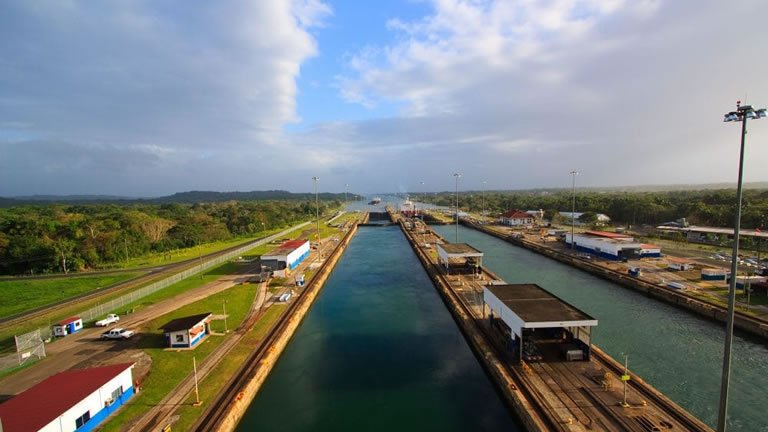Overview
Itinerary
Join trip in Panama City, Panama's eclectic capital and a curious mixture of old colonial Spanish architecture and modern American city buildings. Built on the back of the trade and plunder from the Spanish colonies in South America, Panama City was a key trade route as gold and silver were transported by mule through the rainforest of the Darien region, up to the Caribbean.
Due to the number of evening flights into Panama City, your Leader plans to do the welcome meeting on the morning of day two, and will leave a message in reception with details on timings and everything else that you'll need for the day. There are no activities planned today, so you are free to arrive in Panama City at any time. If you would like an airport transfer today, you'll need to arrive into Tocumen International Airport (airport code: PTY), approximately a 45 minute drive away from our hotel.
If your flight arrives earlier in the day, we recommend a visiting 'Casco Viejo', the heart of the colonial town. Its ramparts were built to fend off marauders, and from the top you have excellent views of the 'Bridge of the Americas'. Stay: Urban Riande Granada (Comfortable)
This morning we will visit the Miraflores Locks to see the famous Panama Canal and appreciate the scale of this engineering miracle. Running 50 miles, the canal was carved out of the rainforest and through hillsides, lakes were dammed and locks built. After a serious French attempt costing in excess of 20,000 lives, the US successfully completed this remarkable endeavour after 10 years of toil in 1914. This afternoon has been left free for you to indulge in a little exploring of your own. 'Casco Viejo', full of Spanish plazas and colonial buildings, is a total contrast to the giant skyscrapers of the modern town and a great place to absorb the ambiance of the city. Stay: Urban Riande Granada (Comfortable) (B)
This morning we head to Panama's beautiful southwest Chiriqui Province. This region is home to the Volcan Baru, a volcanic peak that at 3475m is the highest point in the country. The volcanic soil makes this a productive region, abundant in coffee and banana plantations, sugarcane crops and livestock. Heading for the provincial capital of David, we transfer into the cool fertile highlands to the town of Boquete. Located amidst a spectacular natural setting Boquete is a perfect base for walking into the surrounding hills, relaxing, or bird watching. Stay: Hotel La Serrania (Comfortable) (B)
With a morning to enjoy time in Boquete before we depart in the afternoon for Almirante Port, from where we take a boat to the Isla Colon and the small town of Bocas de Toro, our base for exploring the stunning archipelago and the equally spectacular Parque Nacional Marino Isla Bastimentos. The archipelago itself is made up of a number of beautiful forested islands lying in the warm Caribbean waters just to the south of Costa Rica and the laid back beaches and dazzling reefs make this the ideal Caribbean paradise to relax or explore. Stay: Playa Tortuga Hotel (Comfortable) (B)
We have a full free day today to enjoy fully this lovely island. There are a number of optional activities that you might like to try. The island is ringed with stunning beaches and there are opportunities to snorkel or dive the rich waters off shore. You may like to take a boat trip around the archipelago, which will go dolphin spotting or visit one of the outlying islands, such as Isla Bastimentos with its lovely beaches and tropical forests.
The marine park itself can also be visited and is an important nesting ground for sea turtles, as well as being an important reserve for an abundance of marine and land based life. Stay: Playa Tortuga Hotel (Comfortable) (B)
Returning to the mainland by boat we turn north and head on a full day's drive to the Costa Rican town of Puerto Viejo Sarapiqui.
We cross the border at Guabito, into the Caribbean lowlands of Limon Province. Puerto Viejo lies at the confluence of the Puerto Viejo and the Sarapiqui rivers, an area of tropical rain forest that was once an important hub on the Caribbean trade routes. The area lies in the shadow of the Central Cordillera Mountains, sandwiched between the Braulio Carrillo N.P. to the west and the Tortguero N.P. and Barra del Colorado National Refuge to the east.
We remind customers today to please be patient; crossing borders can be quite a slow process, so ensure you have a book and snacks with you to keep you going. Stay: Ara Ambigua Hotel (Comfortable) (B)
This morning we have a chance to explore a little more of Puerto Viejo and its environs. This area has been in the forefront of conservation for a number of years and La Selva biological station on the outskirts of town has done a great deal to involve the local community directly in the research and conservation of the area. You may like to take a walk along one of the many trails, or perhaps take a boat ride along the river, to see for yourself some of the beautiful forest that covers this fertile region. In the afternoon we drive, skirting the great central volcanic massif, past fertile farmlands, rich with a diversity of tropical crops, bringing us within sight of Arenal, Costa Rica's most active volcanic cone. This classic cone, which rises to 1,633m and is covered by a tangled mass of vegetation on one side whilst the other is starkly barren and scarred by lava flows. We recommend an evening bathe in the nearby thermal baths this evening (optional). Stay: Hotel Monte Real (Comfortable) (B)
This morning we visit the still active Arenal Volcano, set in an area of national park covering some 9,884 acres. The volcano has been fairly constantly active since the late 1960s and together with the impressive manmade Lake Arenal, the largest in Costa Rica, has helped the area to regenerate through tourism. After our visit we continue to the Monteverde Cloud Forest Reserve, one of the last remaining habitats in Central America of the famous Resplendent Quetzal, only occasionally sighted by eager travellers. The reserve covers an area of 10,522 hectares and contains within it a staggering diversity of flora and fauna; 2,000 species of plant, 400 species of birds and 100 different species of mammals. Stay: Claro de Luna (Comfortable) (B)
Rising early, we head into the reserve for a guided walk through the cloudforest, searching for a glimpse of the three-wattled bellbird or the Quetzal, whose feathers were traded as valuable items throughout pre-Columbian America. You have the afternoon free to explore this forest haven; you may wish to participate in the many amazing optional activities around the Reserve such as an exhilerating zip-wire experience as you whiz through the canopy, or perhaps exploring the forest on suspension bridges strung at canopy height. Alternatively the area's butterfly farm and orchid gardens are both well worth a visit. Tonight we also have the option to take a night walk, discovering how the forest comes alive after dusk. Stay: Claro de Luna (Comfortable) (B)
Our journey through Costa Rica's forests and jungles continues today as we head towards the Rincon de la Vieja National Park, an enormous adventure playground located close to the Nicaraguan border in the Guanacaste Province. The National Park has room for two volcanoes, of which one is still active, surrounded by a lush area of lagoons and craters, punctuated with steaming vents and pools of boiling mud. The changing elevation ranges of the park have resulted in an area of diverse habitats that house a variety of vegetation and wildlife. On arrival we will have the option to relax at our eco lodge, or alternatively we can choose to do some nature walks in the National Park, take a horseride to the Oropendola Waterfall, or walk to the park's mud and hot springs. Stay: Buena Vista Lodge (Comfortable) (B)
This morning we visit the Rincon de la Vieja, with the aim of hiking along the Las Pailas Trail. This approximately 3 km hike is moderately difficult due to the uneven ground and the many large roots and rocks to tackle, but we'll take a leisurely pace and enjoy the diverse scenery of the trail. We'll be crossing bridges, walking through forest and across fields, all the while discovering the most impressive features of the park: the steam vents, or fumaroles. These incredible volcanic features pop out of the woods and forests as if from nowhere, along with bubbling ponds and mud pools from the underground volcanic heat and gases. During the first section of the trail we'll have the opportunity to spot wildlife in the forest, from a variety of bird species (toucans, blue-crowned motmots and flycatchers among many others), as well as spider monkeys, coatis or sloths if we're lucky.
This afternoon we have free time to enjoy some of the many optional activities on offer. There is plenty of hiking to be had nearby, as well as a walk to mud and hot springs, or if you're a fan of adventure, undertake the canyon swing at the Rio Blanco Canyon, or explore the surroundings on horseback or by bike. Stay: Buena Vista Lodge (Comfortable) (B)
Crossing the border into Nicaragua this morning a short drive brings us to San Jorge, the departure point for ferries to Ometepe Island. We cross into Nicaragua at the land border crossing called 'Frontera Penas Blancas' - this information will be needed when applying for your Honduras visa for your point of entry into the CA-4 countries.
Ometepe is made up of two volcanoes connected by an isthmus; indeed its name comes from the Nahuatl language and means 'two hills'. The perfect cone of Concepción volcano soars from the depths of Lake Nicaragua to 1610m, only just dwarfing the neighbouring Maderas volcano at 1394m. We leave the time here free to explore at your own pace and there are many things to do during our time here. You can explore by local bus or truck, perhaps searching out pre-Colombian petroglyphs carved by the indigenous people, or taking in some of the highlights of the island and some short walks on the volcanic slopes (all optional). The forests echo with the sounds of howler monkeys and parrots and the canopy hides sloths and hawks amongst its lush foliage. Alternatively you could visit the San Ramon Falls. For the less energetic, some of the black sand beaches are the perfect spot to drink in the stunning views across the lake.
We remind customers todfay to please be patient; crossing borders can be quite a slow process, so ensure you have a book and snacks with you to keep you going. Stay: Hotel Villa Paraiso (Comfortable) (B)
Today is left free to further explore these amazing volcanic islands. Stay: Hotel Villa Paraiso (Comfortable) (B)
We return by boat to San Jorge this morning and from there drive to Granada. Atmospheric Granada is a colonial gem, situated at the foot of Mombacho volcano on the northwest shore of Lake Nicaragua. It was the first colonial city in Nicaragua, founded in 1524 by the conquistador Hernandez de Cordoba and is set off by baroque and renaissance buildings which is a pure visual delight. We plan a city tour this afternoon, which will include visits to the Parque Central, the Monument to the war of independence, the plaza and the convent of San Fransisco, which holds the largest collection of stone sculptures from the early Americans who lived in Granada before the Spaniards. Stay: Hotel Patio del Malinche (Comfortable) (B)
This morning, we have the chance to hike the scenic loop around Mombacho Volcano, located in Mombacho Volcano Natural Reserve. This 1.15km (1 mile) medium difficulty trail offers breathtaking panoramic views of Lake Nicaragua and the city of Granada. Along the way, a local guide will share fascinating information about the area's unique plants, animals, and volcanic history. he hike takes around 3 hours to complete, with an elevation gain of about 200 meters (600 feet).
This afternoon has been left free for you to continue exploring Granada at your own pace. Stay: Hotel Patio del Malinche (Comfortable) (B)
We drive to the old colonial capital of Leon today, lying in the shadow of the Cordillera de los Maribios Mountains. Defined by its graceful Spanish colonial architecture and fascinating political history, we will soon discover why Leon is considered to be Nicaragua's historical, cultural, educational and religious capital. The best way to explore this captivating city is by foot, as much of its charm lies in the narrow colonial streets and architecture, art galleries, museums and cafes. Leon's history is fascinating, like no other town in Central America. The town was dismantled, moved, and rebuilt due to volcanic activities, ransacked (and reconstructed!) by pirates, it won and lost its struggle as the most important city in Nicaragua against Managua, and several presidents were assassinated here. It is the place where famous poets are buried, where the largest cathedral in Central America stands, and is a hotbed for revolutionaries due to the big university located in Leon.
On arrival we will embark on an orientation walk of the city. The afternoon is left free for optional activities. You may opt for a hike on the nearby Cerro Negro Volcano - one of the most active volcanoes in Nicaragua. The hike takes approximately 1.5hrs at a moderate pace, and there are stunning views across to the Pacific Ocean as well as the surrounding countryside. The fun is in bouncing down the volcano, as we run/jump/walk down through the scree. Stay: Hotel Austria (Comfortable) (B)
This morning, we wave goodbye to Nicaragua and head to the smallest country in Central America- El Salvador. Don't let its size fool you; the country is teeming with towering volcanoes, a spectacular coastline, and beautiful colonial towns and villages.
We start our day by driving to the coastal town of Potosí, before hopping on the ferry across the Gulf of Fonseca. On the journey, you can see the islands of three countries: El Salvador, Honduras, and Nicaragua. We expect the ferry to take around 2 hours, plus time at the beach. Our destination is the port town of La Unión. On arrival, we will head out to Conchagua town for a walk and an optional group dinner. The country's national dish is pupusas-these delicious circles of corn dough are stuffed with a mixture of black beans, vegetables, cheese, and meats.
We estimate our journey time today will be around 7 hours. Please be patient; crossing borders can be quite a slow process, so ensure you have a book and snacks with you to keep you going. Stay: Comfort Inn La Union (Comfortable) (B/L)
After breakfast we set off for the capital of El Salvador- San Salvador city, around a 4 hour drive.
Founded in 1525 by the Spanish conquistador Pedro de Alvarado, it was declared a city in 1546. Upon arrival your tour leader will provide you with a panoramic city tour of all the capitals main sights.
After free time for lunch, we will head to the Joya de Cerén Archaeological Site, around 1 hour drive from San Salvador. This pre-Hispanic farming village, much like Pompeii and Herculaneum in Italy, was buried by the eruption of the Laguna Caldera volcano around AD 600. The remarkably well-preserved remains offer a unique glimpse into the daily life of Central American communities who farmed the land during that period.
In the afternoon we have a 1.5 hour drive to the peaceful lakeside town of Suchitoto, where we will spend the next two nights. Stay: La Posada De Suchitlan (Comfortable) (B)
Today has been left free to explore all that Suchitoto has to offer. The town itself seems timeless, with cobbled streets, whitewashed buildings, and an impressive colonial church in a leafy plaza. It was once at the heart of the country's indigo trade, and we have the opportunity to take part in an indigo workshop this afternoon. Alternatively, you may take a boat trip out onto Lake Suchitlan, where over 200 bird species have been recorded including hawks and falcons. Stay: La Posada De Suchitlan (Comfortable) (B)
This morning, we will embark on two border crossings, first entering Guatemala before continuing into Honduras at the border known as Frontera El Florido.
It will take around six hours including a lunch stop and customs formalities, before we arrive at this small, relaxed town just the other side of the Guatemala-Honduras border. With a small plaza principal, and some cafes and restaurants to enjoy, the town of Copan is so unassuming that it's hard to believe that it's home to one of the jewels of the ancient Mayan world. We may not have a lot of time here when we arrive, but we'll take a stroll around the charming town centre this evening before dinner.
We remind customers again to please note that crossing borders can be quite a slow process, so ensure you have a book and snacks with you to keep you going. Stay: Hotel Plaza Copan (Comfortable) (B)
This morning we visit the UNESCO World Heritage Site with a local guide. Everyone familiar with Catherwood's incredible drawings (which first appeared in John Stephens' 1841 narrative - 'Incidents of Travel in Central America and Yucatan') will recognise scenes and objects from this marvellous site. Stephens actually bought the entire site for US$ 50 from a local farmer! The Great Plaza is one of the most amazing achievements of the Classic Maya period (AD 750) and contains the greatest collection of Maya sculpture anywhere in Meso- America. The famous Hieroglyphic Stairway is composed of 2500 individual glyphs; its sides flanked by serpentine birds and snakes. We have the whole day to enjoy this special place, leaving you plenty of time to explore on your own. In the afternoon you may like to visit the museum dedicated to the site, or visit some nearby hot springs or to Macaw Mountain (optional). Stay: Hotel Plaza Copan (Comfortable) (B)
We head into Guatemala this morning, via the border crossing at Frontera El Florido, to the stunning city of Antigua, set in a beautiful valley between the volcanoes Agua, Fuego and Acatenango. An orientation tour of this graceful old colonial city, with its cobbled streets and lovely old buildings identifies it as one of the most charming in the country and shows how it can justly claim to be one of the most picturesque in Central America, despite the damage caused by a series of earthquakes and floods over the ages. This afternoon we intend to take a walking tour of the town. Much of Antigua has been repeatedly devastated by earthquakes, but still it retains a graceful charm and its buildings and ruins give it the air of a snapshot in time. Stay: Villa Colonial (Premium) (B)
The next two days are free to explore more of the city and its environs as you wish. Antigua itself deserves at least a day's wandering, you may like to visit churches, colonial buildings, museums as well as spending time shopping in its many markets. Alternatively may like to visit the close by Mayan site; Iximche, once the capital of the Cakchiquel Maya, founded in the 15th century. Set within pine forests the ruined city was once believed to be home to some 10,000 people at its height, until the arrival of the Spanish conquistadors resulted in its eventual destruction in 1526.
There is also the option, on one of your two days in Antigua, to visit the Maya site of Tikal. This full day trip entails a domestic flight from Guatemala City to Flores, before the drive to the majestic jungle-clad ruins, which were, in their prime, the pride of the Maya empire. Stay: Villa Colonial (Premium) (B)
For those not wishing to spend the day exploring the city, a day trip to Lake Atitlan takes in one of Guatemala's most stunning locations. Panajachel, on the shores of the spectacular lake, is an old Spanish settlement that has attracted foreigners to its charming location for years. The lake itself is an old caldera, its deep waters surrounded by the towering volcanic peaks of its neighbours. This is an ideal place to shop for those last minute presents, or just enjoy the ambience of its lakeside setting. Alternatively, you could visit Guatemala City, the bustling country capital, is situated on a high plateau (1495m) and possesses all the usual contradictions found in large Latin American cities: elegant tree-lined boulevards and high-rise architecture alongside crowded shanties. It also has a number of sites and museums that are worth visiting, including the Ixchel Museum, with its displays of Guatemalan textiles and arts, or the majestic Palacio National in the Plaza Major. Stay: Villa Colonial (Premium) (B)
The trip ends this morning at our hotel in Antigua Guatemala.
There are no activities planned today, so you are free to depart at any time. If your flight is departing later in the day, luggage storage facilities are available at our hotel. If you would like an airport transfer today, you'll need to depart from La Aurora International Airport (airport code: GUA). The drive between the airport and our hotel is only 40km but can take between 1.5 and 4 hours depending on the traffic and the time of day. (B)
Trip Inclusions
- Journey through six contrasting Central American countries on this epic adventure
- Explore colourful colonial towns & sacred Mayan sites
- Unwind on the Caribbean beaches of Bocas del Toro
- Full on paced trips are for travellers who like their holidays packed with activities and experiences, moving on quickly from place to place with lots of early starts and long, busy days. Some may find them tiring, but others get a buzz from packing their precious holiday-time as chock-a - block full of new experiences as possible.
- Accommodation, itinerary and inclusions subject to change.
- Price is for land, cruise and internal flights as specified. Flights not specified are not included
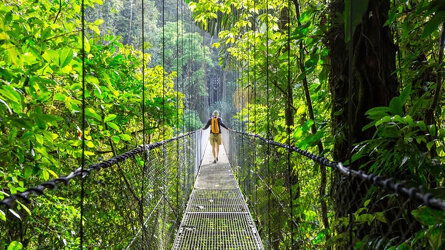
Launching in 1981, Explore offer trips from over 130 countries - from classic small group tours. Read more
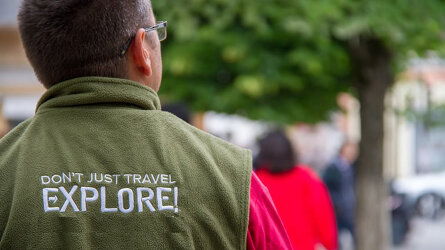
Explore's leaders are more than just your typical guide. They're your local expert are are passionate about sharing their expertise with you. Read more
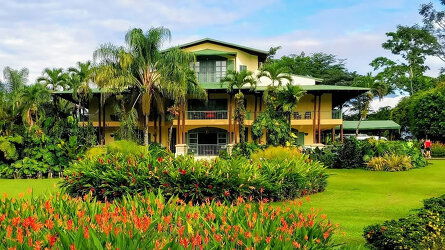
The places Explore stay are every bit as important as the sights they visit and the things you do. Read more
Brochure
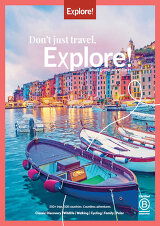
Explore Small Group Adventures (2025-26)
Availability
 USD
USD
A definite departure means minimum numbers have been reached for this departure to operate. Your Global Journeys Travel Advisor will check the availability of your departure date when you enquire. Additional savings may apply. We guarantee the lowest price in USA. T&C’s apply.
Tour & cruises prices are per person. Prices shown have savings applied, are subject to availability and may be withdrawn at any time without notice. Pricing and trip details are correct at this point in time, however are subject to confirmation at the time of booking and are subject to change by Explore. For cruise itineraries, cabin images are sourced from Explore. These should be treated as indicative only. Cabin inclusions, upholsteries and room layout may differ to the image(s) shown depending on the ship selected and your sailing dates.
Similar Tours

21 Days Mexico City Merida
Operated By: Explore
